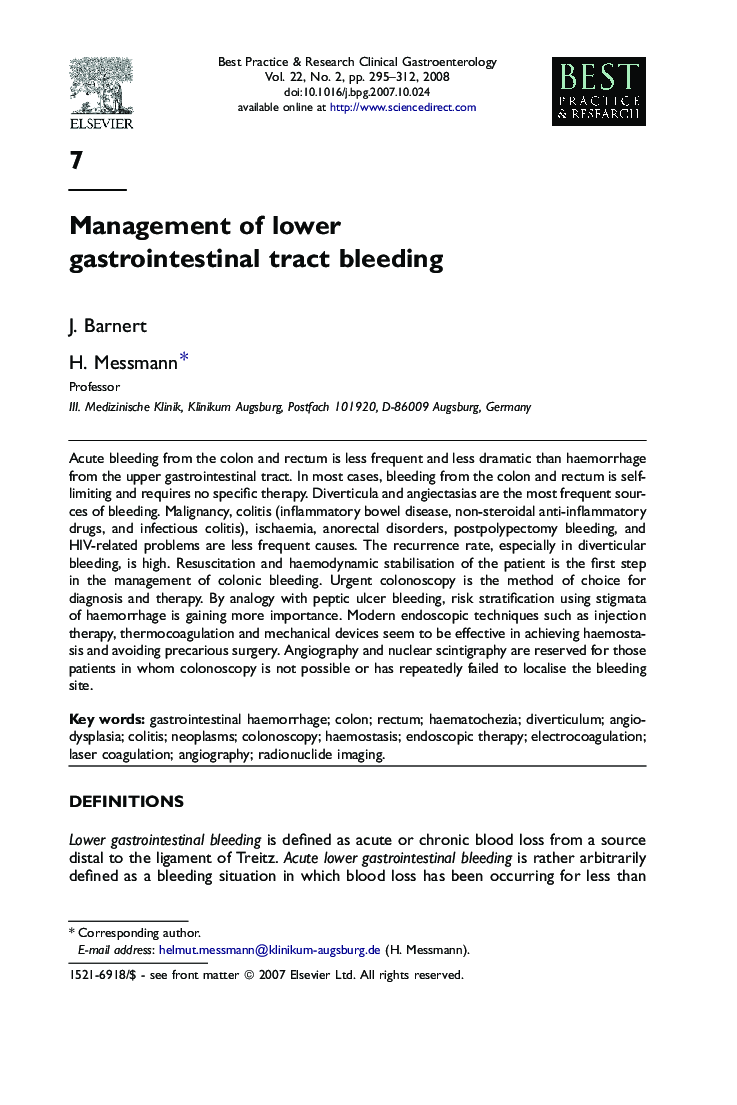| Article ID | Journal | Published Year | Pages | File Type |
|---|---|---|---|---|
| 3254701 | Best Practice & Research Clinical Gastroenterology | 2008 | 18 Pages |
Acute bleeding from the colon and rectum is less frequent and less dramatic than haemorrhage from the upper gastrointestinal tract. In most cases, bleeding from the colon and rectum is self-limiting and requires no specific therapy. Diverticula and angiectasias are the most frequent sources of bleeding. Malignancy, colitis (inflammatory bowel disease, non-steroidal anti-inflammatory drugs, and infectious colitis), ischaemia, anorectal disorders, postpolypectomy bleeding, and HIV-related problems are less frequent causes. The recurrence rate, especially in diverticular bleeding, is high. Resuscitation and haemodynamic stabilisation of the patient is the first step in the management of colonic bleeding. Urgent colonoscopy is the method of choice for diagnosis and therapy. By analogy with peptic ulcer bleeding, risk stratification using stigmata of haemorrhage is gaining more importance. Modern endoscopic techniques such as injection therapy, thermocoagulation and mechanical devices seem to be effective in achieving haemostasis and avoiding precarious surgery. Angiography and nuclear scintigraphy are reserved for those patients in whom colonoscopy is not possible or has repeatedly failed to localise the bleeding site.
